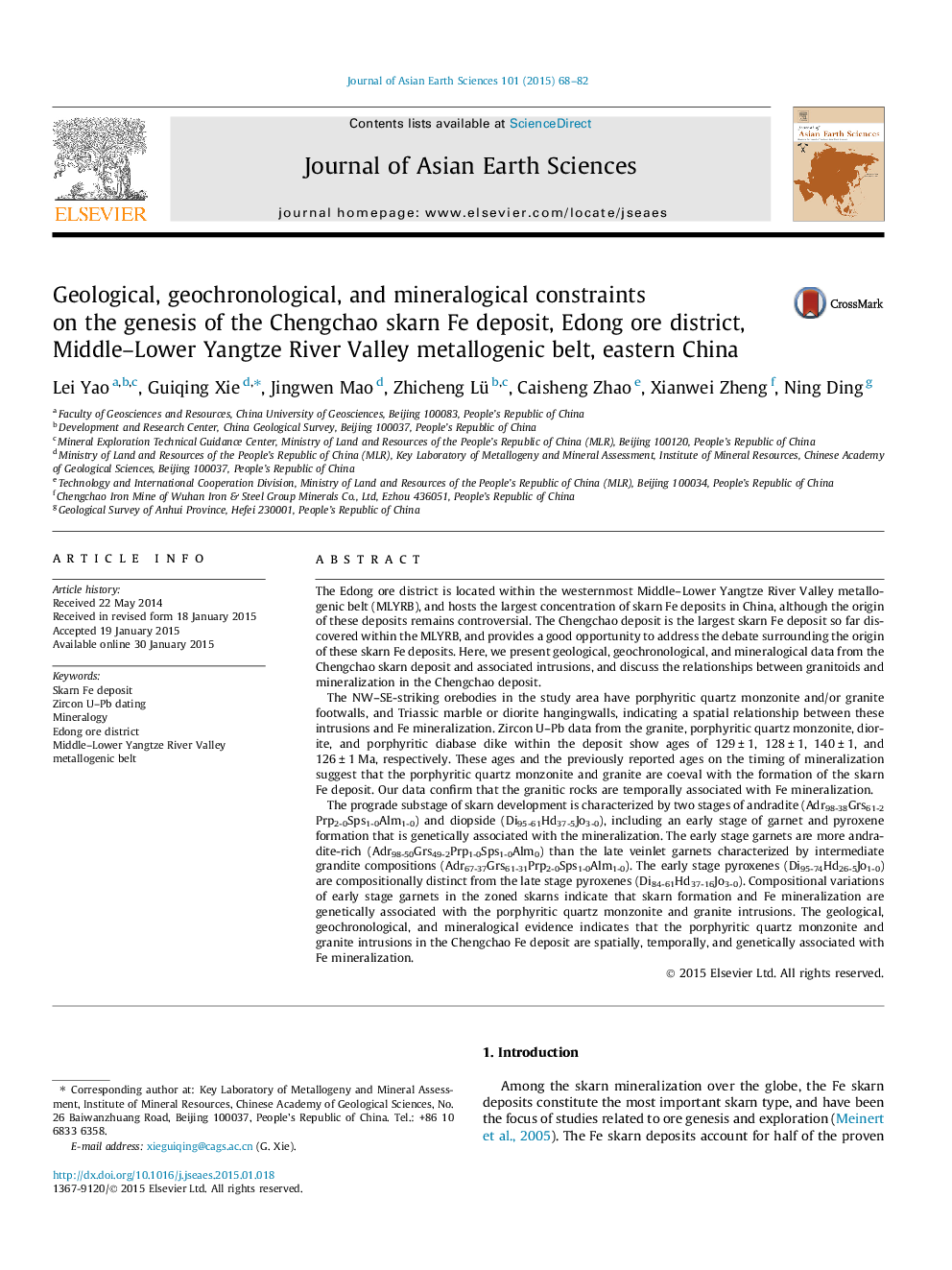| کد مقاله | کد نشریه | سال انتشار | مقاله انگلیسی | نسخه تمام متن |
|---|---|---|---|---|
| 4730399 | 1640368 | 2015 | 15 صفحه PDF | دانلود رایگان |

• Geochemistry, mineralogy and geochronology of the Chengchao Fe deposit are presented.
• The timing of emplacement of the granitic intrusions is coincided with the formation of the iron ores.
• Granitic rocks in the deposit are associated with iron mineralization.
The Edong ore district is located within the westernmost Middle–Lower Yangtze River Valley metallogenic belt (MLYRB), and hosts the largest concentration of skarn Fe deposits in China, although the origin of these deposits remains controversial. The Chengchao deposit is the largest skarn Fe deposit so far discovered within the MLYRB, and provides a good opportunity to address the debate surrounding the origin of these skarn Fe deposits. Here, we present geological, geochronological, and mineralogical data from the Chengchao skarn deposit and associated intrusions, and discuss the relationships between granitoids and mineralization in the Chengchao deposit.The NW–SE-striking orebodies in the study area have porphyritic quartz monzonite and/or granite footwalls, and Triassic marble or diorite hangingwalls, indicating a spatial relationship between these intrusions and Fe mineralization. Zircon U–Pb data from the granite, porphyritic quartz monzonite, diorite, and porphyritic diabase dike within the deposit show ages of 129 ± 1, 128 ± 1, 140 ± 1, and 126 ± 1 Ma, respectively. These ages and the previously reported ages on the timing of mineralization suggest that the porphyritic quartz monzonite and granite are coeval with the formation of the skarn Fe deposit. Our data confirm that the granitic rocks are temporally associated with Fe mineralization.The prograde substage of skarn development is characterized by two stages of andradite (Adr98-38Grs61-2Prp2-0Sps1-0Alm1-0) and diopside (Di95-61Hd37-5Jo3-0), including an early stage of garnet and pyroxene formation that is genetically associated with the mineralization. The early stage garnets are more andradite-rich (Adr98-50Grs49-2Prp1-0Sps1-0Alm0) than the late veinlet garnets characterized by intermediate grandite compositions (Adr67-37Grs61-31Prp2-0Sps1-0Alm1-0). The early stage pyroxenes (Di95-74Hd26-5Jo1-0) are compositionally distinct from the late stage pyroxenes (Di84-61Hd37-16Jo3-0). Compositional variations of early stage garnets in the zoned skarns indicate that skarn formation and Fe mineralization are genetically associated with the porphyritic quartz monzonite and granite intrusions. The geological, geochronological, and mineralogical evidence indicates that the porphyritic quartz monzonite and granite intrusions in the Chengchao Fe deposit are spatially, temporally, and genetically associated with Fe mineralization.
Journal: Journal of Asian Earth Sciences - Volume 101, 1 April 2015, Pages 68–82